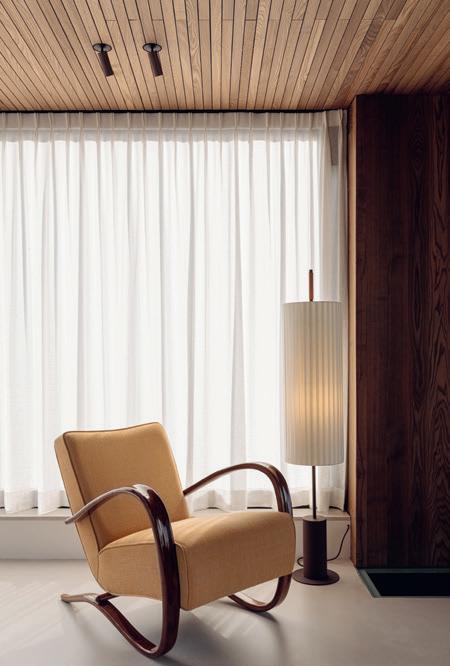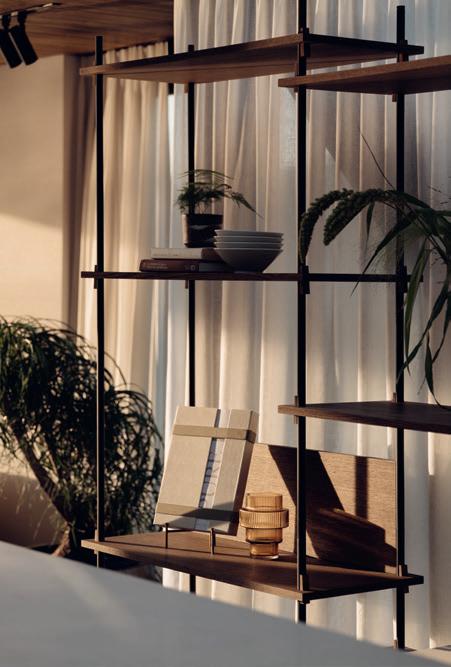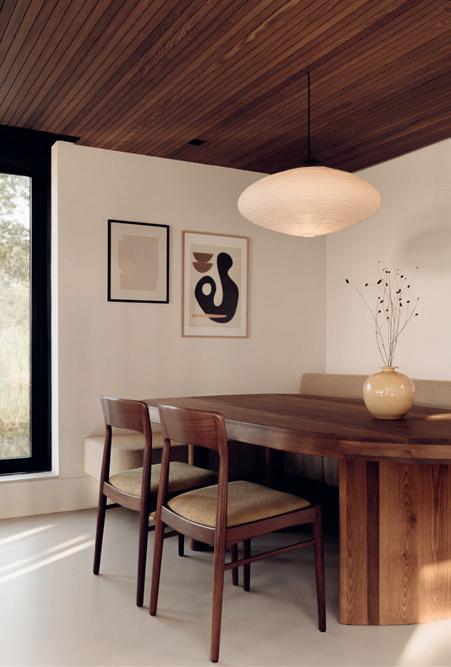


CHAPTER ONE




CHAPTER ONE

Central to the Japandi ethos are principles deeply rooted in simplicity, functionality and a profound appreciation for and connection with nature. To get a better understanding of how deeply rooted these principles exactly are, we’ll first take a deep dive into the fundamental principles of Japanese minimalism and Scandinavian cosiness. As we embark on this exploration, we’ll uncover the essence of Japandi style and learn why it is such a harmonious fusion.
Once we’ve fully explored the roots of the aesthetic, we’ll consider matters like the use of natural and artificial light, colour palettes, shapes and materials, as well as the artful incorporation of decoration and greenery. Japandi design seeks to create spaces that evoke a sense of tranquillity and mindfulness where these elements all play their part. Whether you’re a seasoned enthusiast or a newcomer to the world of Japandi, please join me as we discover spaces that exude serenity, foster personality and inspire a connection with the environment around us.

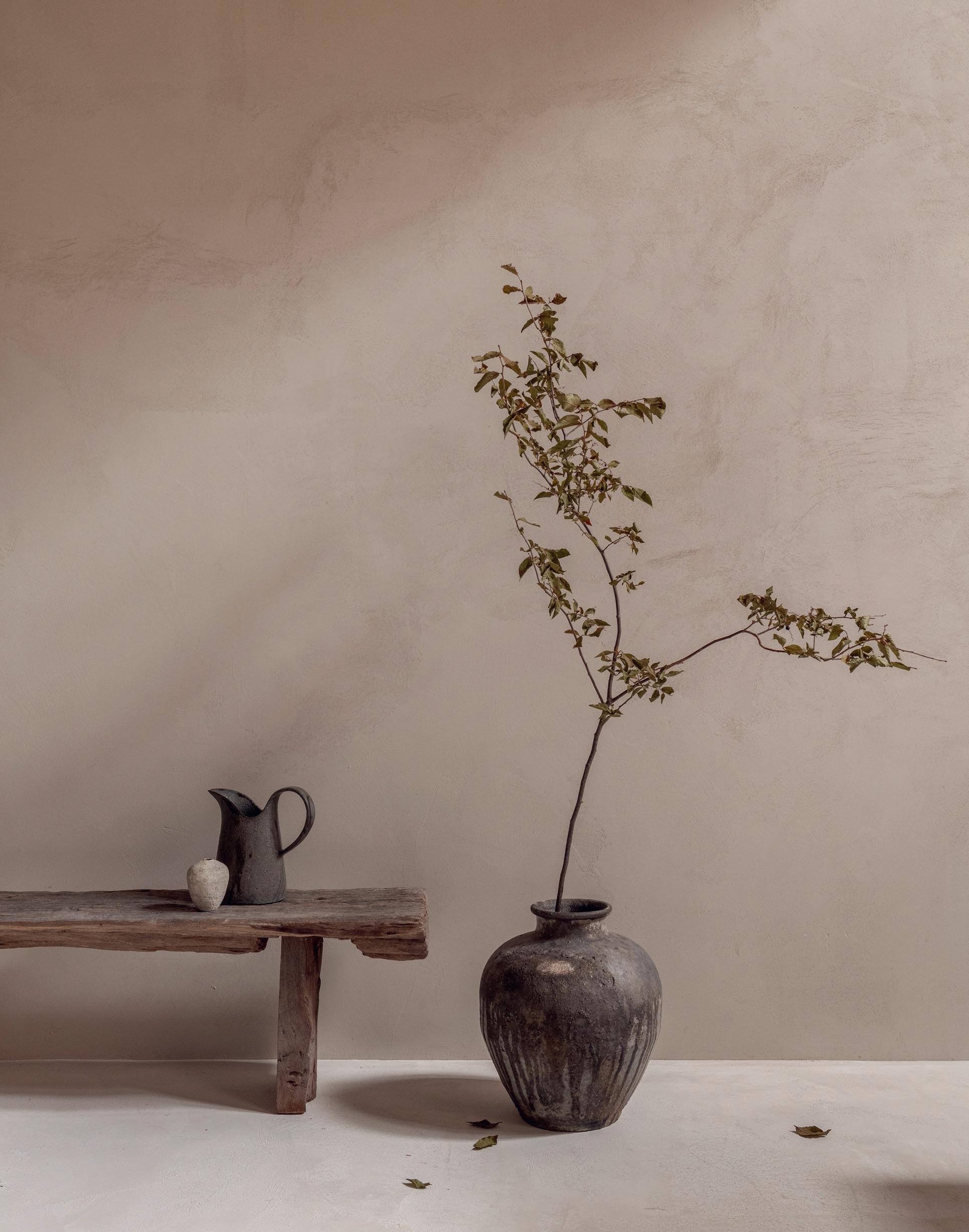

In the serene dance between form and function that defines Japandi, Japanese philosophies play a pivotal role, infusing spaces with a sense of calm, purpose, and understated beauty. As we delve into the essence of these philosophies, we uncover the timeless wisdom that guides the minimalist aesthetic and the tranquil ambiance characteristic of Japandi design. Through the lens of Japanese thought, we gain insights into creating spaces that not only please the eye but also nourish the soul.
At the heart of Japanese design philosophy lies the concept of wabi-sabi, which celebrates the beauty of imperfection and impermanence. This notion encourages us to find joy in the simple, the weathered and the natural, fostering a sense of mindfulness and appreciation for the fleeting moments in life. In wabi-sabi, the natural world becomes a source of inspiration, with its old stones, wood and fading blossoms serving as reminders of the inherent impermanence of existence.
By embracing imperfection and impermanence, wabi-sabi invites you to find contentment and fulfilment in the present, cultivating a deep sense of inner peace and acceptance. A beautiful example of wabi-sabi is kintsugi. Kintsugi is a traditional Japanese art form that involves repairing broken pottery with lacquer dusted or mixed with powdered gold, silver or platinum. The philosophy behind kintsugi is deeply rooted in the principles of wabi-sabi. Wabi-sabi values uniqueness and appreciates the individual characteristics of objects. Kintsugi repairs are often highly individualized, with each piece of pottery being mended in a way that reflects its specific breaks and flaws. This emphasizes the uniqueness of each object and the story it carries.
Scandinavian design is renowned for its light, airy feel and emphasis on functionality. Whites, soft greys and muted beiges dominate Scandinavian interiors, creating a sense of spaciousness and lightness. These hues serve as a backdrop for other elements in the room to stand out. These colours also reflect light, a pleasant trait during long, dark winters.
Drawing on inspiration from the Nordic landscape, Scandinavian design incorporates natural elements like wood and stone, often accompanied by earthy tones such as warm browns and soft greens. These colours add warmth and cosiness to minimalist spaces. While neutrals prevail, Scandinavian interiors often feature bold accents in primary colours as well as folk style or brightly coloured ornamentation in greens, yellows and pinks. These vibrant hues inject energy, contrast and personality into a space, creating visual interest without overwhelming the overall simplicity.

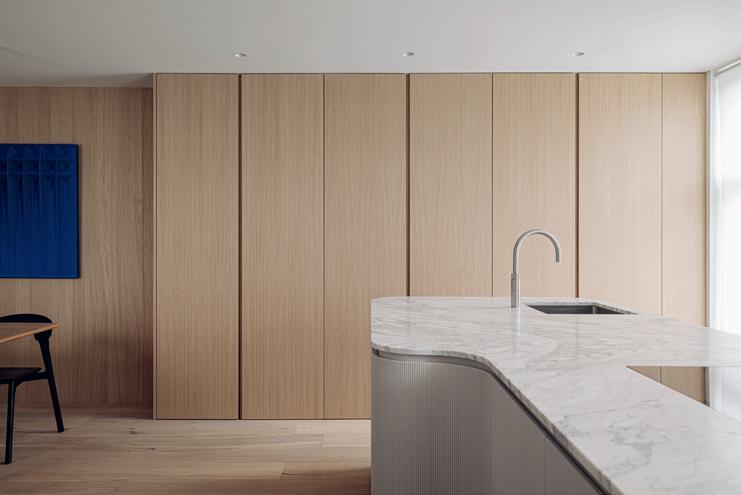

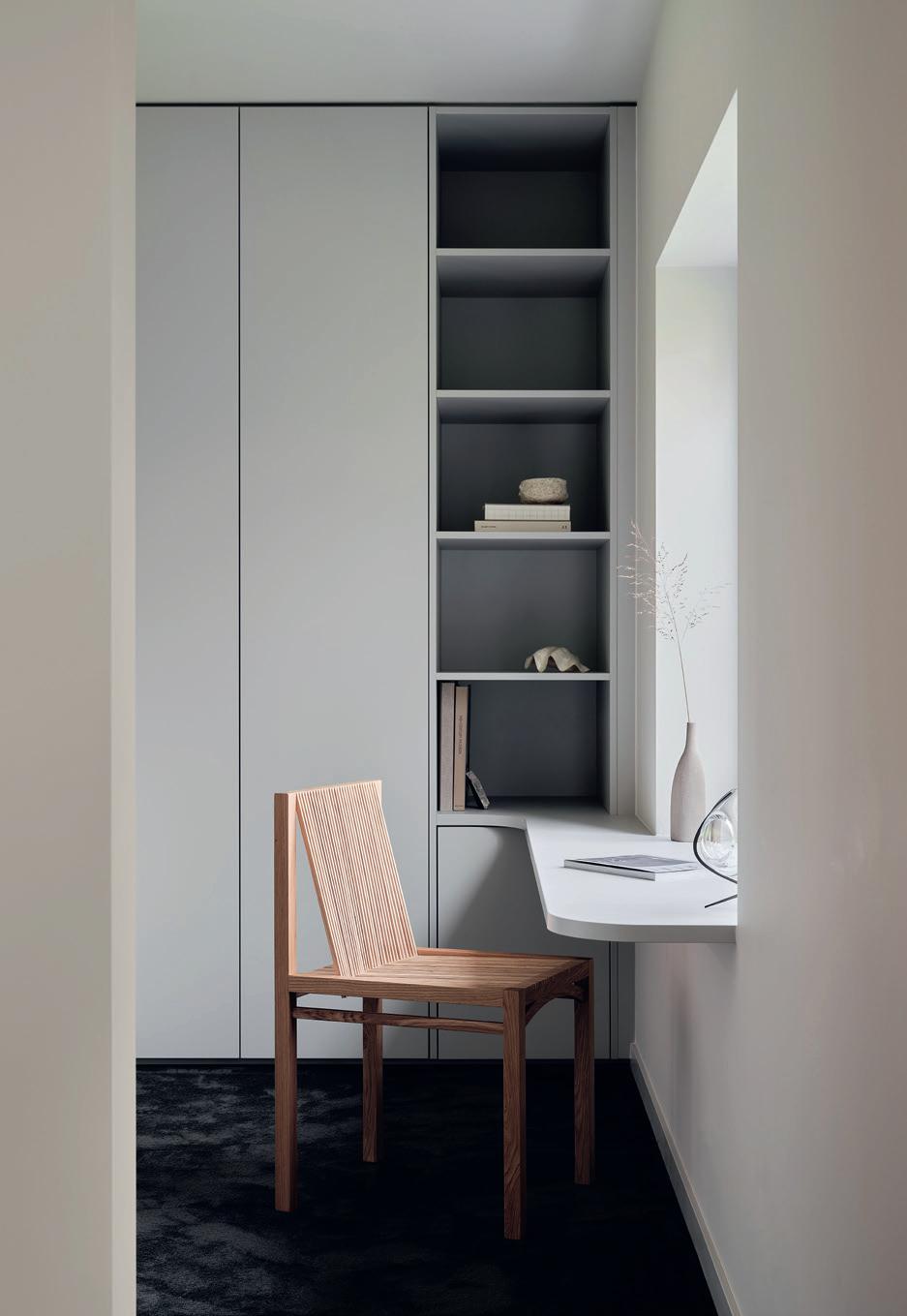



Wood, my favourite material, is a predominant material in Japandi interiors that is often used for furniture, flooring and architectural elements. For a more Scandinavian angle you could use light-toned woods like oak and ash. They have the ability to brighten up the space and create a sense of airiness. From a Japanese perspective you’ll see more darker tones like stained or smoked oak and walnut. The natural grain patterns of wood add visual interest without overpowering the simplicity of the design.
Many people are hesitant to combine different woods in a space. Here are a few basics that might help. First of all, pick the dominant wood tone from the space, like a wooden floor or the largest piece of furniture, like a dining table or bookcase. When choosing your other wood tones, always consider your dominant shade first and check if the undertones (warm, cool or neutralpage 69) match. For example, if you have light oak wood floors, lean into similar warm tones, like walnut, instead of clashing dusty driftwoods.
You can also play with contrast by placing black stained chairs against a driftwood-hued table. As long as those undertones match, you’re good. Create continuity with similar wood grains or finishes. Repetition is what makes a room feel cohesive. If you’re looking for something slightly cohesive but not matchy-matchy, embrace a general colour palette. Lean, for example, into different shades of dark woods or all light woods to make the mix feel intentional and curated.


CHAPTER TWO

Simplicity reigns supreme, natural materials take centre stage, and light and nature are revered as sacred elements of daily Japandi life. Whether it’s a rustic farmhouse in the countryside, a traditional Japanese inn (ryokan) or a sleek urban apartment in the heart of the city, all Japandi spaces offer a sanctuary of serenity and an invitation to slow down, savour the moment and embrace the beauty of simplicity.
In this chapter we kick off with a couple of traditional homes to learn about the fundamental principles of Japanese and Scandinavian architecture. We also learn about the significance of the tradition of bathing in both cultures. We then take a look at the economy of spaces and at a few homes that are beautifully connected with nature. I also show you how to shape the Japandi lifestyle around family life and gatherings. Lastly, we take a peek inside some dreamy places to stay in or visit – worthy of any bucket list.



In Japan, the essence of connecting with nature is often expressed through carefully curated Zen gardens and open courtyards (page 109). Traditional Japanese homes, known as minka, incorporate natural elements like tatami mats, shoji screens and sliding doors that open up to reveal meticulously maintained gardens. These gardens are not merely decorative but serve as a meditative space where one can find peace and reflect on the beauty of nature.
The concept of wabi-sabi is deeply ingrained in the design of Zen gardens. They evolve over time, reflecting the changing seasons and the passage of time, adding to their meditative quality.
In contemporary times, the principles of Zen garden design continue to influence modern landscaping and architecture. Many urban homes and public spaces incorporate elements of the traditional Zen garden to create oases of calm amidst the hustle and bustle of city life. Whether in a traditional setting or a modern adaptation, the timeless appeal of Zen gardens lies in their ability to evoke a sense of peace, balance, and harmony with nature.
In Scandinavia, where natural sunlight can be scarce, especially during the long winters, Japandi design focuses on maximizing light and incorporating nature in more subtle ways. Large windows, often extending from floor to ceiling, are a common feature, allowing as much natural light as possible to flood the interior spaces.
Incorporating elements of biophilic design, which emphasizes the human connection to nature, Japandi interiors often feature views of the outdoors and access to natural landscapes. Sliding glass doors, skylights, and indooroutdoor living spaces blur the boundaries between the interior and exterior, inviting nature into the home and creating a seamless transition between the two environments

“The art of stone in a Japanese garden is that of placement. Its ideal does not deviate from that of nature.”
-Isamu

There are many stunning, dreamy and luxurious places around the world, both residential and commercial. Some are traditional, some modern; some influenced by other cultures or climates. When travelling I love to be inspired by all these variations on the aesthetic. Or to stay over in a Japandi inspired dwelling. It’s like the Finnish architect and designer Alvar Aalto once said 'Nothing happens in the world unless it first happens in somebody’s imagination.' So let me take you through my dreamy bucket list of stayovers, all with a beautiful Japandi vibe and all on my wish list to visit one day.






